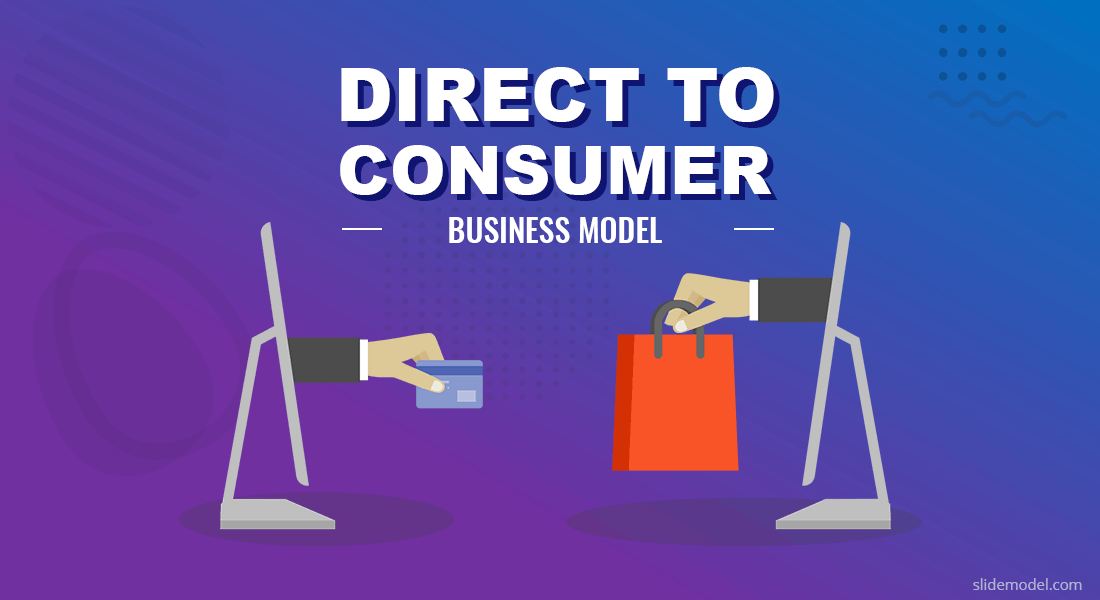Major companies like Nike have chosen to leave the platform and sell on their own sites, and many cite the way Amazon favors wholesalers. However, Amazon is still an excellent place to sell products as a DTC brand.
While it would be wise to have other sales channels in place, Amazon is still quite valuable for scaling companies that sell products directly to consumers. In fact, many note Amazon as one of their major profitable channels for sales. So who can sell DTC on Amazon successfully? Is it worth it? In this guide, we’ll break down how to sell on Amazon while protecting your brand’s direct-to-consumer business.
Selling on Amazon with DTC in Mind
There are a few key points to understand if you need to decide whether to sell Direct to Consumer on Amazon or not.
What is DTC?
Direct to Consumer or DTC refers to the process of selling products directly to a brand’s customer, instead of going through third-party retailers or sellers. A DTC company will have their own website where they will sell their products and will often have a physical or digital store, in addition to other sales channels. The main purpose of DTC is to cut out the middleman and offer products directly to potential customers. DTC brands won’t be found in stores like Walmart or on platforms like eBay. Rather, they’ll sell their products from their website or via platforms that host sellers.
DTC Selling Limitations
There are some limitations when it comes to selling DTC on Amazon. To start, one of the most noted issues with selling DTC on Amazon is distribution. Most DTC brands will directly hand off their customers without the need for a third-party platform or entity. Because of this, it is very important for a DTC brand to manage each step in the sales process. It is also the brand’s responsibility to ensure that the customer has an excellent experience.
Achieving this for any business is no simple task, especially if your customer is new and does not have a previous relationship with the brand. The expectations will by high, especially with today’s modern and wary consumer. Many people are less comfortable with providing their credit card information or address to a brand they’re unfamiliar with on a website they have never used before.
This is where Amazon comes in and acts as the middleman between a consumer and a brand. Amazon has millions of users, many of which use the platform regularly and trust it. Plus, all a shopper needs to do to make a purchase is click on their address and payment method. It makes sense why people are more comfortable with Amazon than with an unfamiliar website.
But isn’t this a good thing? Yes and no. Amazon has made many people unfamiliar with other e-commerce platforms. That means that the distribution of your sales channels could be quite uneven and your home store could lose sales because shoppers only want to shop on Amazon. This downside could be an issue if you want to establish your brand presence and direct your marketing endeavors towards your website more than your Amazon store.

Outside of the downsides of distribution, there are many benefits to selling DTC on Amazon.
The Benefits of Selling DTC on Amazon
Despite the downsides, there are many benefits to selling Direct to Consumer on Amazon.
- Amazon is one of the most effective and efficient sales channels to reach new customers and established customers, especially in the United States. The reason for this is because over 66% of product searches begin on the platform as opposed to search engines like Google, which only 20% of consumers use.
- If you manage to snag some positive reviews on your Amazon product page, you could find that your brand’s sales have improved on other channels, such as your website. We mentioned how distribution can be an issue if you sell DTC on Amazon. However, many consumers will use Amazon to read reviews, since the platform is less biased and more trustworthy than the actual brand’s own website reviews. Through ratings and in-depth written reviews, consumers can make informed decisions that could push traffic to your website where they can read more about your product or push shoppers to your brick-and-mortar store.
- Amazon could very well become a big part of your bottom line. Amazon could easily make up around 40% of your overall retail sales. Many surveys have found that DTC brands are selling over half of their online products via Amazon. Again, this could be a distribution problem if you want to direct traffic to your store. However, if your business is set up in a way that benefits from a majority of sales coming from Amazon, then this is definitely a benefit.
- Amazon tends to have fairly low acquisition costs. DTC brands are closer to the top of the funnel. Amazon, instead, is near the bottom. The closer a consumer is to the “buy” stage of the customer journey, the lower your costs will be when it comes to securing that customer. This is also hugely beneficial for advertising efforts. While Google and Facebook offer relatively low rates for PPC ads, Amazon’s customer acquisition costs make up the difference. To put it simply, Amazon is a good spot to sell and advertise DTC products.
How to Sell Successfully on Amazon
If you have a product that is popular and consumers are demanding it, but you don’t manage your brand presence on Amazon, someone could easily sneak in and try and sell your products for a higher profit on Amazon. And they won’t do a very good job of it, which could harm your brand image. Third-party non-approved sellers are a bit of a problem on Amazon, and customers rarely know whether or not the seller is the actual brand. Things could get even messier if third-party platforms make untrue claims in their product descriptions. This is very important to know if you’re on the fence about selling on the platform.
So how can a brand sell successfully on Amazon and combat fraudulent sellers? To start, you need to be the first one to hit the market. If you don’t launch this sales channel quickly and start listing products, it’ll be even more difficult to clean up brand impression issues on the platform from third-party sellers. Be there first.
You’ll also need to ensure that your product is the first one that shoppers see when they are searching for a specific product. It’s vital that your item appears very high up in Amazon search results. We’re not talking about general SEO, either. Your brand’s name and your unique product name needs to be at the top of search results to push fraudulent seller listings down further. To do this, ensure that you have a powerful and proven keyword strategy in place. Take the time to edit and update your content on a regular basis to ensure your keywords are relevant. SEO is a constantly changing thing, and staying on top of your listings and keywords will ensure success.
It is also a good practice to monitor and manage your product’s performance. Look at the traffic that is traveling to your Amazon product page as well as your storefront. It is also a good idea to monitor your conversion rate on those pages as well. Once you begin to notice a drop or steady decline in that traffic, you’ll want to address the cause quickly. Consider the following questions:
- Are there other sellers on Amazon that are trying to sell your product?
- Do you have a Best Seller, Prime, or FBA badge on your product listing?
- Is your product from your Amazon account displaying first on relevant search results?
- Is your content a little too detailed or complex?
- Are your products merchandised in the same locations?
- Are there better ways for you to target all of your unique customer segments?
Once you’ve sniffed out the problem, fix it immediately to keep your sales steady.
Finally, you should always be testing your content, copy, product pages, marketing, and everything in between. The only way to discover what is working or not working on your listing is to conduct a split test. A split test will provide information that you can use to make decisions on what content you should keep or get rid of. We recommend testing your feature images, prices, titles, and bullet-point features for efficiency.
What do you think about selling Direct to Consumers on Amazon? Tell us how your effort to sell directly to consumers online has affected your business in the comments section below. If you’d like to check are other recent blog post, you can see that here.
